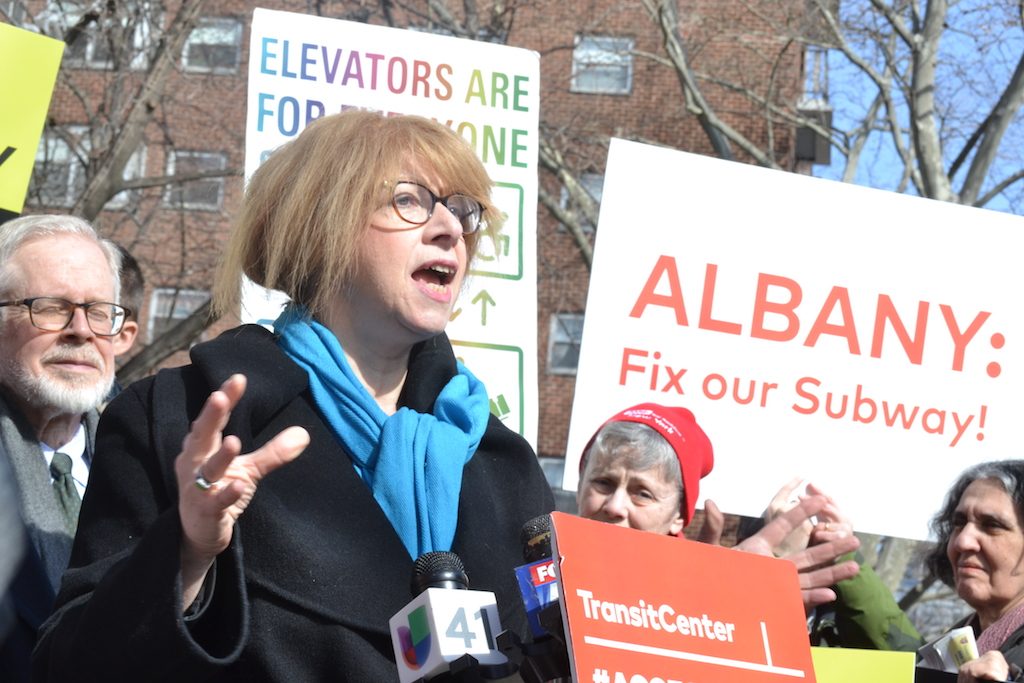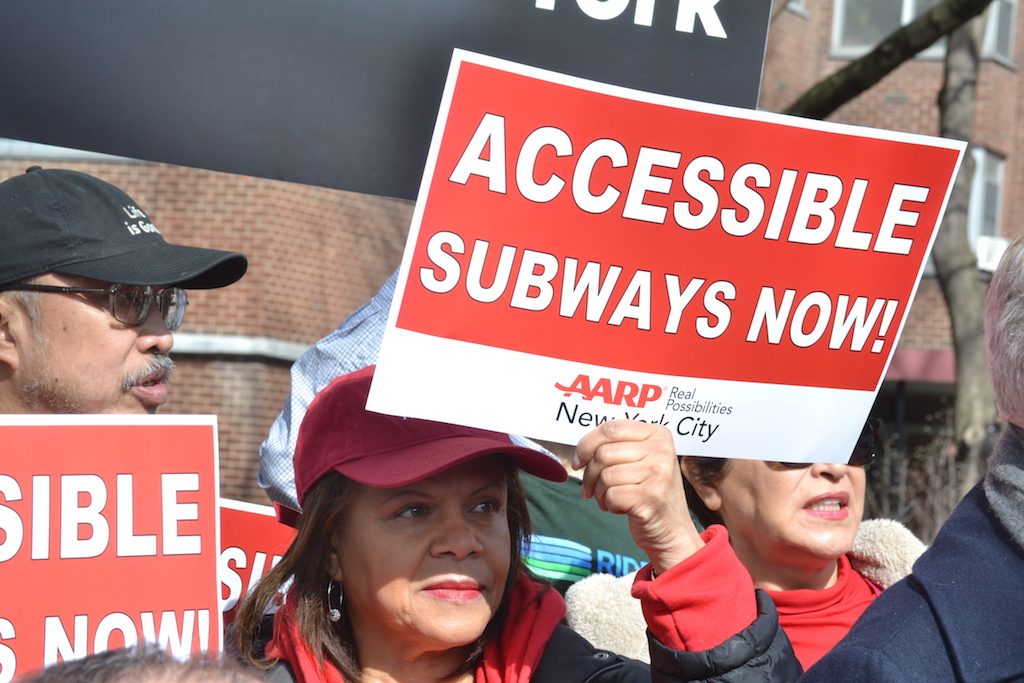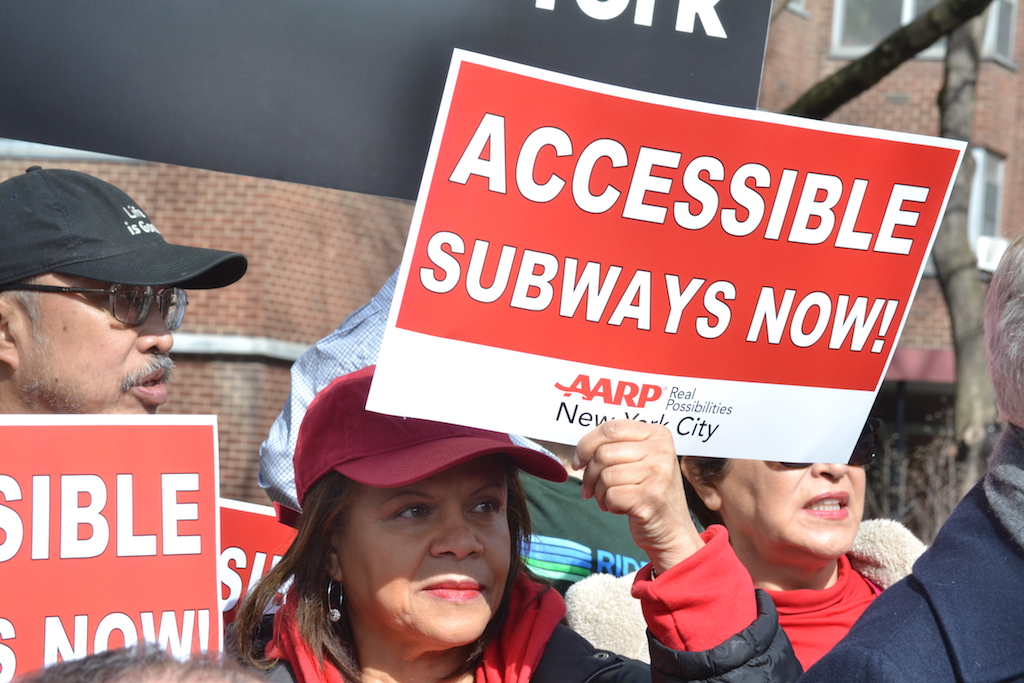
BY ALEJANDRA O’CONNELL-DOMENECH | Local politicians, transit advocates, retirees and AARP reps rallied on Eighth Ave. near the 23rd St. C/E subway stop last Wednesday to demand that the station — and the city’s entire subway system, in general — be made fully accessible.
“The writing is on the wall,” said Chris Widelo, AARP associate state director for advocacy in New York City. “Fewer New Yorkers will be able to get where they need to go if the state doesn’t keep pace with our aging population and make sure everyone can actually access the subway.”
The inaccessibility issue in the subway will only worsen as the city’s population ages, speakers said. According to the New York City Department for the Aging, by 2040, the number of older adults in New York City will reach 1.84 million, or nearly 21 percent of the population.
“We have this incredible subway station,” said Gail Siegal, a Manhattanite who has difficulty walking due to age. “But if you can’t walk up and down the stairs, you can’t use it.”
For many at the demonstration, including Assemblymember Richard Gottfried, the solution to the subway’s accessibility problem is fully funding the Fast Forward Plan. That initiative, led by Andy Byford, president of New York City Transit Authority, is a 10-year plan to modernize the city’s transit system, and would cost an estimated $30 million.
But talk of cuts to the plans has started circulating. According to a Daily News report, lack of funding is threatening the needed upgrades for 14 of the 50 stations Byford wanted to make accessible in the original Fast Forward Plan. However, according to Gottfried, the revenue produced by congestion pricing would solve the program’s funding issue.

The Metropolitan Transportation Authority’s Web site states that 114 of the city’s 472 subway stations have handicap-accessible elevators. However, that number has been disputed in a recent study from Manhattan Borough President Brewer’s Office.
Advocates said the overall lack of elevators, ramps, multiple subway entrances and long platforms make travel difficult for the elderly and physically impaired. Going farther, some activists charged that the subway’s current condition endangers the lives of all New Yorkers.
“Elevators are for everyone,” proclaimed Sasha Blair-Goldensohn, a member of Rise and Resist’s Elevator Action Group. “It’s not just about wheelchairs.”
People are not going to walk the extra quarter-mile to get to an accessible station, Blair-Goldensohn added.
“They are going to try to get down the stairs with their stroller and their baggage — and we saw three weeks ago the tragic accident that happened when people are forced to do that,” she said.
She was referring to Malaysia Goodson, the 22-year-old woman who, on Jan. 28, fell down the subway steps at Seventh Ave. at 53rd St. while carrying her daughter’s stroller and died.
“It’s not right,” she said.


































